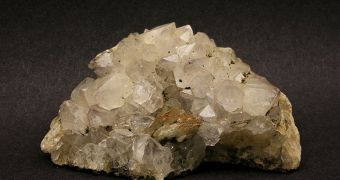A group of investigators in the United States announces the creation of a new type of metal-free organic crystals, which are capable of exhibiting phosphorescence when excited by ultraviolet light.
This is the first time that this property has been obtained in materials other than non-organic compounds or organometallics. The new achievement could lead to cheaper, more efficient and flexible display screens for a variety of uses.
Having the ability to make pure organic compounds shine with phosphorescence has been a long-standing goal among physicists for many years, but now researchers at the University of Michigan actually managed to achieve this difficult objective.
The new class of materials was developed by U-M researcher Jinsang Kim and his science team. The organic crystals the group created are white when viewed under normal, white light.
But, when they are exposed to ultraviolet (UV) light, they begin to radiate blue, green, yellow and orange. The colors they emit can be changed by varying the chemical composition of the crystals.
These crystals could be used to improve existing technologies, such as for example organic light-emitting diodes (OLED) and solid-state lighting. The luminous materials are called phosphors.
Material costs and manufacturing issues prevent companies from using OLED extensively to create computer and laptop displays. The diodes are now used only on cell phones and video cameras.
Additionally, researchers say that OLED are not entirely organic. They need to be augmented with metallic elements in order to make them glow brighter. The advantage is that they consume very small amounts of electricity.
“Purely organic materials haven't been able to generate meaningful phosphorescence emissions. We believe this is the first example of an organic that can compete with an organometallic in terms of brightness and color tuning capability,” Kim explains.
The expert, who is an associate professor of materials science and engineering, chemical engineering, macromolecular science and engineering, and biomedical engineering at U-M, is the author of a new paper detailing the findings, which appears in the latest online issue of the journal Nature Chemistry.
“By combining aromatic carbonyls with tight halogen bonding, we achieve phosphorescence that is much brighter and in practical conditions,” adds paper coauthor Onas Bolton.
He recently received his PhD in Materials Science and Engineering at the university. “This is in the beginning stage, but we expect that it will not be long before our simple materials will be available commercially for device applications,” Kim explains.
“And we expect they will bring a big change in the LED and solid-state lighting industries because our compounds are very cheap and easy to synthesize and tune the chemical structure to achieve different colors and properties,” he concludes.

 14 DAY TRIAL //
14 DAY TRIAL //